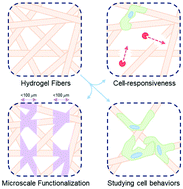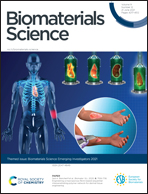Electrospun hydrogels for dynamic culture systems: advantages, progress, and opportunities
Abstract
The extracellular matrix (ECM) is a water-swollen, tissue-specific material environment in which biophysiochemical signals are organized and influence cell behaviors. Electrospun nanofibrous substrates have been pursued as platforms for tissue engineering and cell studies that recapitulate features of the native ECM, in particular its fibrous nature. In recent years, progress in the design of electrospun hydrogel systems has demonstrated that molecular design also enables unique studies of cellular behaviors. In comparison to the use of hydrophobic polymeric materials, electrospinning hydrophilic materials that crosslink to form hydrogels offer the potential to achieve the water-swollen, nanofibrous characteristics of endogenous ECM. Although electrospun hydrogels require an additional crosslinking step to stabilize the fibers (allowing fibers to swell with water instead of dissolving) in comparison to their hydrophobic counterparts, researchers have made significant advances in leveraging hydrogel chemistries to incorporate biochemical and dynamic functionalities within the fibers. Consequently, dynamic biophysical and biochemical properties can be engineered into hydrophilic nanofibers that would be difficult to engineer in hydrophobic systems without strategic and sometimes intensive post-processing techniques. This Review describes common methodologies to control biophysical and biochemical properties of both electrospun hydrophobic and hydrogel nanofibers, with an emphasis on highlighting recent progress using hydrogel nanofibers with engineered dynamic complexities to develop culture systems for the study of biological function, dysfunction, development, and regeneration.

- This article is part of the themed collection: Biomaterials Science Emerging Investigators 2021


 Please wait while we load your content...
Please wait while we load your content...